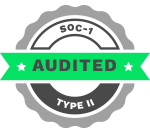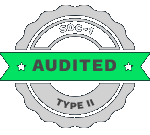Lineage provides executive assurance by building trust and confidence in data, ensuring regulatory compliance, and enabling data-driven risk management. By offering a transparent, end-to-end view of data’s journey, lineage gives executives the reliability needed to make informed and strategic business decisions.
For executives, the reliability of data is paramount. Lineage provides this assurance by revealing the complete history of data. Lineage tracks data from its origin, through all transformations and systems, to its destination. This creates a clear and understandable “data roadmap” that eliminates ambiguity about data sources and changes.
Lineage also helps in minimizing an organization’s exposure to regulatory and operational risks. It helps identify security vulnerabilities and potential data breaches by tracking data usage and access.
The data governance framework provides operational insights that directly improve business efficiency and strategic agility. By providing a clear and comprehensive view of data flows, lineage helps executives and data leaders plan for major changes, such as cloud migrations or system modernizations, with a full understanding of data dependencies.
Risks associated with poor lineage
Poor data lineage tools pose significant risks to an organization, undermining data quality, jeopardizing regulatory compliance, and leading to flawed decision-making. An incomplete or inaccurate understanding of a dataset’s journey, from its origin to its final form, erodes trust in the data and creates costly inefficiencies across the business.
The risks associated with poor lineage can be categorized into four major types:
Business and operational risks
When executives and analysts do not trust the data, they may disregard reports and rely on gut feelings instead. This leads to misguided strategies, lost opportunities, and miscalculations, in turn, having a negative impact on the organization’s financial performance.
Regulatory and compliance risks
Many industries face strict regulations, such as GDPR, HIPAA, and SOX, that require precise documentation of how data is handled. Poor lineage increases the risk of submitting erroneous reports to regulatory bodies, leading to legal penalties and reputational damage.
Data quality and trust issues
Data quality can decay over time as it moves through various systems, undergoing transformations that introduce errors, inconsistencies, and inaccuracies. Poor lineage can lead to data quality issues like bias, incomplete data, or outdated information, causing models to produce unreliable or inaccurate predictions.
Security and privacy risks
Poor data governance tools, which relies on clear lineage, increases the risk of data breaches. This slows down the recovery process, amplifies damage, and makes it difficult to provide accurate reports to regulators, potentially leading to additional fines.
Data Lineage Tools and Frameworks
Automation tools and frameworks in data lineage are designed to automatically track, map, and visualize the flow of data from its source to its consumption, including all transformations and movements. These data lineage tools enhance data governance, compliance, and understanding.
Let’s look at the major automation tools and frameworks.
Collibra: A comprehensive data governance tool/platform with robust data lineage capabilities, offering detailed visualizations and tracking.
Alation: A data catalog tool that integrates data lineage to provide context and understanding of data assets and their transformations.
IBM Manta Data Lineage: Specialized in automated, detailed lineage mapping for complex data pipelines.
Google Cloud Data Catalog: A cloud-native service providing metadata management and lineage tracking for organizations utilizing Google Cloud.
Data Orchestration Tools: They can provide insights into data flow and dependencies within defined pipelines, and dbt offers static analysis for lineage within its data governance framework.
Data Lineage tools benefits for the C-Suite
Data lineage tools provide the C-suite with significant benefits including enhanced data governance and compliance, which reduces risk and ensures adherence to regulations like GDPR and CCPA. It improves data quality and trust, enabling better strategic decision-making and supporting initiatives like AI and machine learning.
Along with offering robust data governance tools and frameworks via a clear view of data flows and helping to enforce compliance rules, data lineage helps in highlighting the root cause of data quality issues, enabling faster fixes and building trust in the data.
If we consider the operational and cost efficiency, data lineage reduces the time and effort needed to troubleshoot data errors by providing a clear map of the data journey. By identifying redundancies and streamlining data workflows, organizations can reduce operational costs and make manual effort.
KPIs for measuring lineage value
Data lineage’s value is best measured using KPIs that track its impact on data quality, operational efficiency, regulatory compliance, and business growth. By enhancing the understanding of data flow, lineage delivers benefits that can be quantified across different areas of an organization.
Data quality and trust
These KPIs measure how data lineage improves the reliability and trustworthiness of data assets. The percentage of data flows and transformations that are correctly documented and mapped. A high score indicates a well-maintained data environment, while a low score suggests data silos or unreliable sources. The percentage of critical data assets for which lineage has been fully documented. A high value ensures accurate reporting and analysis, while a low value points to gaps in data tracking.
Operational efficiency and productivity
These KPIs focus on how data lineage improves the efficiency of data teams and business users. The time it takes to assess the potential impact of a change to a data source or a new data requirement. Data lineage allows teams to quickly understand downstream dependencies. The average time it takes for data users to find and understand a specific dataset. Comprehensive lineage makes it easier for users to identify relevant data assets and their context.
Risk and regulatory compliance
These KPIs demonstrate how data lineage helps organizations manage risk and meet regulatory obligations. The time required to pull and document data for compliance audits (e.g., GDPR, CCPA). Data lineage creates an automated audit trail for a faster process. Fines or Penalties Avoided: A measure of the financial and reputational costs avoided by preventing regulatory violations. While a lagging indicator, this can be linked to the proactive measures enabled by data lineage.
Conclusion
Data lineage provides a clear, trustworthy view of data’s journey from origin to end-use, which is critical for modern businesses to ensure data accuracy, comply with regulations, and make informed decisions.
By providing transparency into data sources, transformations, and destinations, it allows organizations to build trust in their data, improve data quality through root cause analysis, manage changes effectively, and increase collaboration between data teams.
To achieve a comprehensive lineage along with its benefits of enhanced trust, compliance, and data quality, opting for leading organizations like BluEnt that caters data lineage solutions lets organizations experience a seamless and hiccup-free data journey while achieving their business goals.
FAQs
How does data lineage help executives gain assurance in their data?Data lineage provides a transparent, end-to-end view of data’s journey, including its origin and all transformations. This eliminates ambiguity and builds trust in the data’s reliability, which is crucial for making confident, strategic decisions.
What are the main risks associated with poor data lineage?Poor lineage can lead to significant business and operational risks, including flawed decision-making, costly inefficiencies, and a lack of trust in data. It also increases the risk of regulatory non-compliance, which can result in legal penalties and reputational damage.
What role do automation tools play in data lineage?Automation tools help track, map, and visualize data flow automatically. This reduces manual effort, improves the accuracy of the lineage, and makes it easier to govern and understand complex data pipelines.
How can the C-suite measure the value of data lineage?The value of data lineage can be measured using key performance indicators (KPIs) that track improvements in data quality, operational efficiency, and compliance. Examples include documenting critical data flows and reducing the time needed for impact analysis.
How does data lineage benefit compliance and risk management?Data lineage helps organizations meet strict regulations like GDPR and HIPAA by providing a clear audit trail of data handling. By identifying security vulnerabilities and tracking data access, it also minimizes an organization’s exposure to security and privacy risks.













